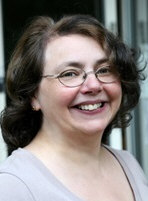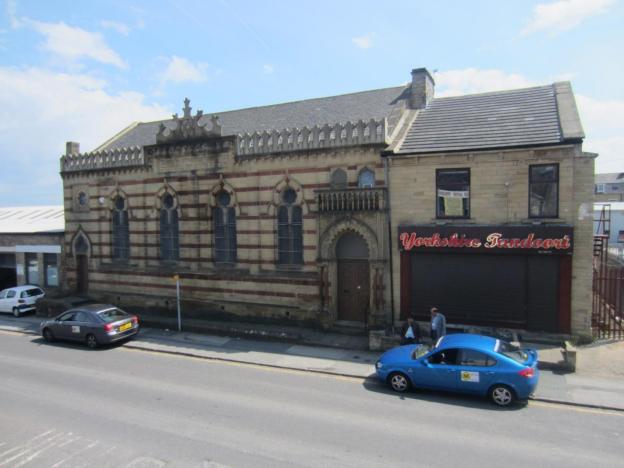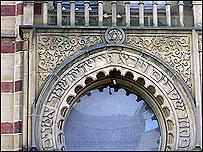Parashat Terumah: In the making of Sacred Space
Categories: Jewish Heritage Walks
The following piece appears courtesy of Rabbi Sylvia Rothschild and originally appeared on her personal of blog on January 27, 2014.
When Jacob left his home and journeyed to Haran he spent the night on the road. There he had a dream of a ladder between heaven and earth, and of God standing above him. When he woke, he said to himself: Ma Norah HaMakom ha’zeh. Eyn zeh ki im beit Elohim, v’zeh sha’ar hashamayim. ‘How full of awe is this place! this is none other than the house of God, and this is the gate of heaven.’ Gen 28:17Sacred space is something that we all resonate with. And in parashat Terumah we have the beginnings of the first deliberately created sacred space.When Jacob recognised the awesomeness of the place where he had so blithely slept, he simply set up a pillar and offered a sacrifice of oil to the God he had just encountered. He moved on to Haran the next day, keeping with him the memory and the promise God had given him. He had no need to do more than mark the space for future use, but we need more – either because we have never had an encounter with the divine, or because we know that memory fades and we need a more concrete reminder of what God can be for us – we need to inhabit sacred space.
In parashat Terumah God tells Moses to build a sacred space – a mikdash, a place that is in some way kadosh – separate, distinct and special, that embodies an idea and directs us towards it.
From earliest times the commentators have pointed out that what the mikdash does NOT do is to embody God, or in any way be a place where God actually lives. The phrase that God uses “Assu li mikdash v’shachanti BETOCHAM” – let them make for me a mikdash, a sacred and separate space, and I will dwell AMONG THEM is key.
The mikdash is the first building to be created for the awareness of God, it will be in the midst of the camp and will be a portable building that moves with the community, but it will be in the making of it – assu – that God dwells among us. Moses is told where and how to build the mikdash. There are chapters and chapters of detail as to how to build it, with what materials, what colours shapes and sizes, how much everything weighs and costs, where it is to be placed. But all of that is secondary – God’s presence isn’t in the building, but in the people working to create it. The presence of God is something that occurs only when people are actually doing something to bring it about.
The synagogue I grew up in, the Bradford Synagogue was the third Reform synagogue in this country and is the second oldest building (Manchester having lost its original synagogue in Park Place). The quotation at the top of the extraordinarily decorated exterior comes from a young Jacob who had just encountered God in a very ordinary place, “Ma Norah HaMakom hazeh. Eyn zeh ki im beit Elohim, v’zeh sha’ar hashamayim. ‘How full of awe is this place! this is none other than the house of God, and this is the gate of heaven” was one that seemed to fit the grandeur of the Moorish Architecture of this beautiful building which was built in 1880 as the Bradford Synagogue for British and Foreign Jews. It was and is an amazing building, with vaulted ceilings and a free standing domed ark with grille-work to the front standing within a huge niche which is painted a midnight blue, and golden stars shine behind it, so that as a child it was easy to imagine being in a different and exotic world. Added to that the rich scarlet of the bimah coverings and the Persian carpets covering the raised area by the ark meant that truly it was (and is) a place filled with awe.. It was an awesome place and a place where heaven and earth met because of the community which met within it, which educated its children and celebrated the festivals and fasts of Jewish time. It was a community always small enough for every single person to matter, for everyone to have to be involved if it would survive.
That Synagogue is proof that it isn’t really the building that creates a sense of God, however gorgeous and ornate it might be – it is the people who come to work within it, the ordinary people who in daily life might work in retail or wholesale, be dentists or doctors, teachers or journalists. Each of them, with willing heart, brought what they had to create a community. The whole key is in that verb – assu. We have to be doing, to making, to be forming and creating the whole time, not resting on our laurels in beautiful places, not turning places into museums of sacred space. Jacob had the right idea when having acknowledged the power of the encounter with the words “Ma Norah HaMakom hazeh. Eyn zeh ki im beit Elohim, v’zeh sha’ar hashamayim. ‘How full of awe is this place! this is none other than the house of God, and this is the gate of heaven.‘ – he then he marked the place and moved on.
Sacred space is only sacred if we keep adding to its kedushah by being ourselves people who are kedoshim – people who follow the sacred principles and try to be more like God in our behaviour.
A busy mother of three, Rabbi Rothschild manages to combine working within her community with a number of other interests such as developing liturgies and rituals, information governance and keeping up with medical ethical issues. She volunteers a chaplain in a number of local hospitals and hospices, writing, personal study, daf yomi, and the needs of home and family. She is married to Jack and in addition to their three children they have,” two dogs and a cat”, according to her personal blog.




Comments are closed.